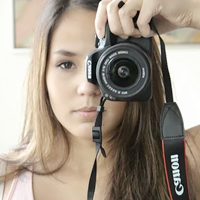The Wind Window Explained - Chasing the Dream: Vlog 14
A kiteboarding television show?
Chasing the Dream is one part travel TV show, one part Vlog and one part useful information.
New episodes every Thursday!
Follow Crystal as she explores the best kiteboarding locations in the world, interviews the top riders, and learns all there is to know about kiteboarding subculture.
This is entertainment with a purpose. Along the way, we'll be doing shorter episodes to answer some of the more common kiteboarding questions.
In this Episode, Crystal travels from Miami to Key West. While these two cities might be close geographically they might as well be on the other side of the world. While in Key West, Crystal gets a glimpse into the kiteboarding scene here while learning a thing or two about patience and the wind. Speaking of wind, she also breaks down the wind window (starting at 4:27) and why it is imperative to understand this kiteboarding basic.
What is the wind window and why is it so important for kiteboarders?
To put it simply, the wind window is the area of the sky where the kite is able to fly. The wind window is a half dome, so if you picture a dome and cut it in half at the upwind and downwind line, everything down wind of you is the wind window.
The size of the wind window is determined by the length of your kite lines plus you. So if you have 24-meter kite lines, your wind window is approximately 25 meters above you, all the way down to the ground on either side of you, and all the way downwind of you.
Remember, your kite can only fly in the wind window. This is something that’s very important to know when you arrive at a new kite beach. This is critical information if you want to know where to launch your kite! Take a moment before you launch your kite to determine where the wind window is.
At this stage, you should already know the difference between upwind and downwind, but my favorite technique to determine upwind and downwind is to stand with the wind at your back, and turn until you can feel/hear the wind blowing at an equal volume over both ears.
You may remember from your beginner lessons that the instructor spoke a lot about the window window and the clock, with straight up being 12 o’clock, and the ground or water being 3 and 9. It is only possible for your kite to fly between 9 and 3 (9, 10, 11, 12, 1, 2, 3). Unless somehow you can defy the laws of physics and fly underground or underwater.
The next thing you may want to know more about is the power zone, and that is everything in front of you. Everything downwind is in the power zone. Remember, if your kite is anywhere on the top or edge of the wind window between 9 and 3, it is in a neutral zone. You really can’t generate too much pull or power flying your kite here.
If your kite is somewhere down towards the front of your zone, it is in a power zone. The red zone shown is where you will get the most pull from your kite, the yellow zone will give you medium power, and the green zone is less power or neutral.
A kite has the most power when it is directly downwind of the flyer in the power zone, and the least power when it is right above you at the edge/top of the wind window.
When your kite is directly downwind of you in the power zone, there is a lot more surface area exposed to the wind than if your kite is above you in one of the neutral zones. This is why we always launch our kites at the edge of the window at either 9 or 3. We never launch our kites downwind because it’s pretty dangerous. You can get dragged or thrown, and the whole point of kiteboarding is to have fun… not to get dragged on your face down the beach.
If you’ve ever had to relaunch your kite in water before, you may have an idea of what it feels like to launch your kite downwind. In a situation where you kite is crashed in the water straight downwind of you, when you pick it up to relaunch it you can get yanked or thrown from the pull of the kite shooting up in the power zone.
Once you’ve started progressing and getting more advanced, you may like to use the power zone to your advantage by doing tricks and kite loops. You may enjoy the feeling of the power of the kite. As you’re learning and progressing and getting comfortable, it’s much easier and safer to keep your kite in the yellow zones rather than in the red zone.. or the hot zone.. or the danger zone, as some like to call it (probably just me).
Something to remember is that every time you want to take a break or chill or you’re stressed out and not sure what to do with your kite, just put it above you at 12 in the neutral zone. You are safe there!
I hope you’ve enjoyed this introduction to what the wind window is. If you have any questions, please post it in the comments, we’re happy to answer more!
*Written & produced by Ryan (Rygo) Goloversic and Crystal Veness
 Crystal Veness
Crystal Veness
Originally from Canada, she now calls the entire world her playground and simultaneously her workplace. Whether that's an impromptu office in the back of a rental car on top of a mountain or a hut on kite beach Cabarete, she is a true embodiment of the work-life balance movement.
Instagram: @crystalintl
Facebook: CrystalVeness
Twitter: crystalintl
Recent Posts
-
How to Do an Assisted Kiteboarding Launch
The Brazilian Brothers have put together a quick tutorial on how to launch your kite with an assis …12th Dec 2025 -
Reedin WhisperModel Light Wind Test
The Reedin WhisperModel makes some impressive claims for light wind riding. Jeff decided to put it …11th Dec 2025 -
Duotone Evo D/LAB vs. Harlem Thrive
The Brazilian Brothers love big air kites, but they also know that they're not all created equal. …10th Dec 2025




